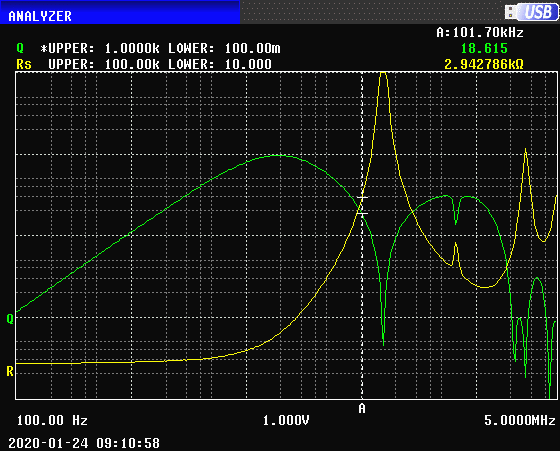To show the behavior of an inductor above self resonance, here's a another sweep. This is a commercial 10 mH molded toroidal inductor. This inductor is rather small and is no doubt wound with many turns of very small magnet wire.
Both plots, Q (green) and Rs (real part, yellow) are shown on a log scale with the upper and lower values of the each plot shown in the upper left part of the image. The A marker is set to about 100 kHz, and the first self resonance is at about 160 kHz. The sweep in this plot goes up to 5 MHz and we can see a number of parasitic resonances:
